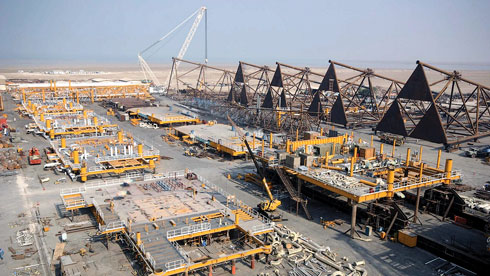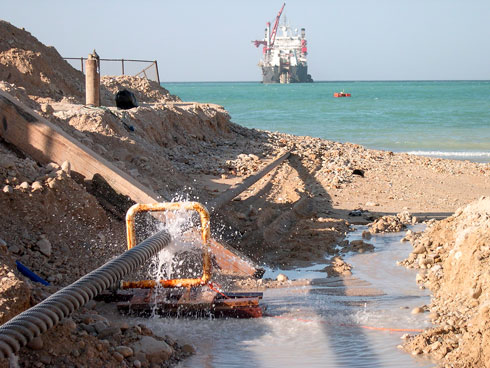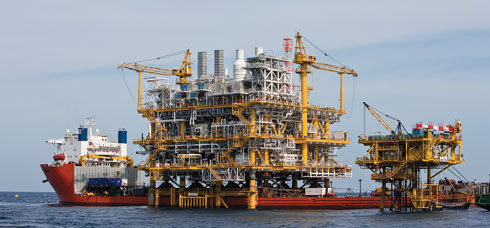Regional focus
E. Gerden, Contributing Writer
Russian natural gas monopoly Gazprom is strengthening its presence in the gas market of the Middle East through the planned construction of an 11-metric-MMtpy–12-metric-MMtpy LNG plant in Iran. The plant will source gas from the South Pars gas field (Fig. 1), Iran’s largest. The majority of the LNG product will be exported to Southeast Asia and the EU.
 |
|
Fig. 1. The South Pars field, from which the new LNG plant will source its gas. |
The expansion into Southeast Asia will allow both Russia and Iran to form the so-called Middle East-Asian Energy Ring. It will also make the two countries the largest suppliers of LNG to one of the world’s most densely populated regions, where gas demand has significantly increased in recent years.
Gazprom has reached a preliminary agreement with state-run National Iranian Oil Co. (NIOC), the operator of the South Pars gas field, for the establishment of a JV that will be responsible for the implementation of the project. The company has been operating in South Pars since 1997, when it participated in the development of the second and third phases of the field.
However, due to the imposition of economic sanctions on Iran by the UN Security Council in 2006, further operations of Gazprom and other oil and gas majors within Iranian territory were suspended. On January 16, 2016, sanctions were lifted, which allowed foreign energy companies to resume operations in Iran.
Gazprom signed a memorandum of understanding with the Iranian government in March 2017 outlining the planned cooperation of Russia and Iran in the global gas industry, and in particular the LNG sector. The new venture will be registered in the form of a service enterprise. This strategy should help avoid legal problems in Iran, as production of oil and gas in the country can be conducted only by state-owned companies, under state law.
LNG project strategy. A foreseen challenge for the project is low global gas prices. According to assessments by the Russian Ministry of Energy, global LNG prices have declined by 45% since the beginning of 2017, compared to average LNG prices in 2016. The decrease is due to an abundance of LNG on the global market, as well as to the link between natural gas and oil prices, which are also weak. If prices for natural gas and LNG remain low, then payback periods for the project may be longer than originally envisioned.
Another issue is that approximately 90% of Iran’s gas transportation fleet is operated by Chinese firms. China is not expected to encourage deliveries of LNG produced in Iran to Southeast Asia, as the region falls under China’s sphere of energy influence.
NIOC is expected to aim for a controlling stake in the LNG venture with Gazprom; however, this will depend on adequate funding for the project and the technologies used. According to the Russian Ministry of Energy, the majority of the funds will be provided by Gazprom.
South Pars’ total gas reserves are estimated at 13.8 Tm3. Iran’s reserves are just over 12 Tm3, with the remaining reserves located in the territorial waters of Qatar. Iran holds approximately 17% of global gas reserves and is the third-largest gas producer in the world. In 2016, Iran’s gas output totaled 192.5 Bm3, while domestic consumption was measured at 191.2 Bm3. To make use of its massive gas reserves, Iran plans to commission up to 60 metric MMt of LNG production capacity over the next 10 yr–12 yr.
Gazprom considers the LNG project in Iran to be of strategic importance for diversifying its operations. The importance of the project, and the impacts of Russia’s ongoing financial crisis, are underlined by Gazprom’s recent decisions to suspend or cancel several similar domestic LNG projects. The company has suspended implementation of the Vladivostok LNG project in the Russian Far East. Gazprom already operates an LNG plant in Sakhalin with the capacity to produce 10 metric MMtpy of LNG.
From a strategic point of view, investments in Iran might justify themselves, since Gazprom will be able to redirect a portion of the volume of Iranian LNG destined for Europe to Southeast Asia instead. This would also minimize Iran’s expansion into the EU gas market, which is largely controlled by Gazprom.
Work on the new LNG plant could be started by the end of the current year, as the partners may speed up the process to secure contracts for future LNG supplies in a competitive marketplace (Fig. 2). According to some forecasts, LNG capacity to be commissioned in 2018 will exceed 133 metric MMt. Of this volume, 60 metric MMt will come from US projects, while another 53 metric MMt will come from Australia.
 |
|
Fig. 2. Preparations for building an LNG plant at South Pars. |
Southeast Asia to need more LNG. Demand for gas is increasing in the region. Delivery via LNG carrier is thought to be a more viable option than pipelines for many countries, due to their geographical location and the high costs associated with pipelines.
According to predictions by the Russian Ministry of Energy, the volume of LNG imported to Southeast Asia may double during the next several years, as local production cannot satisfy growing regional demand. This expanding consumption provides an opportunity for both Russia and Iran to significantly increase their shares in the global LNG market.
For example, Thailand has recently announced its plan to cut domestic gas production and to increase imports of low-cost spot LNG in an effort to conserve its declining gas reserves. The Thai government aims to reduce gas production from the Gulf of Thailand by 10%, from approximately 79 MMm3d at present to 71 MMm3d by 2018 (Fig. 3).
 |
|
Fig. 3. Gas production platform in the Gulf of Thailand. |
At the same time, Indonesia is considering LNG imports by 2019 if no new oil fields are developed, according to the Indonesian Ministry of Energy and Mineral Resources. The country could become a net importer of LNG by 2030, as its domestic gas reserves are steadily declining.
Vietnam is expected to become another major LNG consumer in the coming years. To date, the country has relied mostly on coal-fired power plants, which provide about 40% of its electricity needs. However, amid growing environmental concerns and declining coal reserves, the country’s government has shifted its attention to gas as an alternative energy reserve. On top of this, Bangladesh has announced its plan to begin LNG imports after 2020.
Before the imposition of sanctions, Iran had planned to build at least two LNG plants on the basis of South Pars. One, referred to as Persian LNG, would have included two LNG trains, each with a capacity of 8.1 metric MMtpy. The liquefaction process initially selected for the project was Shell’s double mixed-refrigerant process.
Another project, Pars LNG, would have seen the construction of an LNG plant with a capacity of 10 metric MMtpy. France’s Total and Malaysia’s Petronas had planned to partner on the project. The implementation of both projects was suspended when sanctions were imposed. GP
Eugene Gerden is an international contributing writer specializing in the global oil refining and gas industry. He has been published in a number of prominent industry publications.




Comments